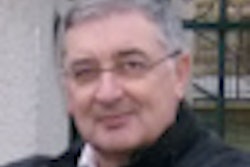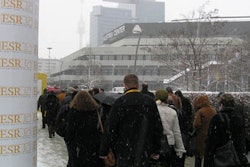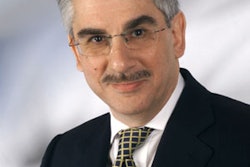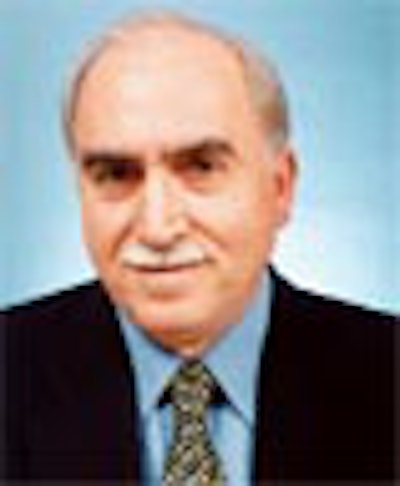
As the curtain rises on the European Congress of Radiology 2003, AuntMinnie.com presents an exclusive in-depth interview with the president of this year's Vienna congress, Dr. Nicholas Gourtsoyiannis. Gourtsoyiannis is a professor of radiology and dean of the University of Crete School of Medicine. He offers wide-ranging insights on new developments in the field, this year's conference highlights, and long-term plans afoot within European radiology.
What's new for ECR 2003?
A number of features will debut at ECR 2003. For example, this year we are introducing new educational initiatives including the New Horizons Sessions, which explore new directions in research and in clinical applications. Also, new Interactive Image Teaching Sessions are aimed at enhancing active participation and interaction between instructors and preregistered participants. We are also introducing Historical Sessions combined with historical exhibitions.
The major innovations which will mark ECR 2003, as well as the ECRs to follow, are the development and introduction of EPOS, the Electronic Poster Online System, the E3 (Excellence in Education in Europe), as well as the ECR Meets projects.
Most important, ECR 2003 is the first fully digital radiological congress ever staged.
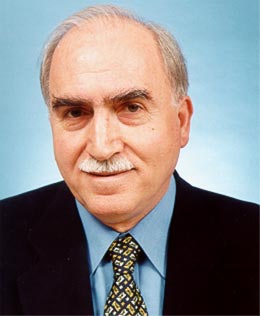 |
| Dr. Nicholas Gourtsoyiannis |
You mentioned the new ECR Meets sessions, which are designed to highlight the radiology contributions of the president's home country (Greece) and those of a second invited country -- in this case, Turkey. How did this program come about, and what can we look forward to hearing from these groups?
ECR’s major role in the international radiological community has always been to gather colleagues from all over Europe and beyond, and offer them an inspiring environment in which they can define common goals and horizons. Their diverse cultural backgrounds have proven to be conducive to congenial ideas, and the basis for innovation and vision.
ECR Meets was designed to foster closer ties with our European neighbors and create new synergies. It also aims to increase the visibility of the European congress among the national radiological societies. The key focus will be on the so-called quest countries, which, led by the home country of the congress president, will have the opportunity to present themselves and their scientific work. These countries' contributions will also be celebrated in social and professional ECR functions.
Turkey has been selected as the invited country of ECR 2003 in order to honor the commitment of Turkish radiologists within the ECR. Turkish radiology has achieved significant scientific success over the last few years, and will certainly offer attendees interesting insights in a session on interventional neuroradiology organized by the Turkish Society of Radiology.
The other ECR Meets session will be held by the Hellenic Radiological Society, the national society of the president’s home country, and will present an exciting program on ultrafast MR imaging. Greece has been a valuable contributor to the high-quality scientific program of the ECR for many years, being the third country in terms of submitted and accepted scientific papers at ECR 2003, while the number of Greek ECR members and delegates attending the congress has been constantly rising.
Speaking of numbers, how does ECR 2003 compare to last year's congress in terms of attendance, scientific presentations, and vendor participation?
As of February 28 we had the same pre-registration as last year, approximately 11,000 in total registration and 6,700 professionals, and we also expect about 2,000 registrations onsite.
The number of scientific papers submitted for ECR 2003 showed an increase of 21.2% compared to last year’s meeting. As far as the technical exhibition is concerned, the entire exhibition space has been sold out for a year.
Are you seeing any interesting trends in the participation of individual countries? Are the national radiology societies giving adequate support to this meeting?
At this year’s meeting Greece definitely is the country with the most significant rise in attendance. With an increase of 46% compared to last year, Greece currently ranks third in the country statistics, paying tribute to the country’s presidency at ECR. This demonstrates that Greece has become highly active on the European stage, reaching far beyond its current six-month presidency of the European Union.
Participation figures for the other countries are more or less the same as last year. The annual ECR is fully supported by the national radiology societies of Europe, which provide a solid and reliable basis for this unique European platform, which again provides tangible evidence of Europe’s unity, and of our willingness to cross national borders, and to benefit from joint activities be it in politics, economics, or in the field of medicine.
You also mentioned the EPOS Electronic Poster Online System, which will replace traditional poster presentations at this year's congress. Is the system reliable? Have you noticed any resistance to it, either among end-users or the researchers who input their research materials?
The system is undoubtedly reliable. It has been tested during the process of submission, selection, and evaluation of the scientific exhibits, and we hope that it will work satisfactorily onsite, at presentation and discussion.
Of course, EPOS has some disadvantages. We will certainly miss the ability to capture the essence of a study at a glance, or we may disapprove of the style or some technical limitations at present. But there are also great advantages, including permanent exhibition on the Internet, and availability to many more people than attend the ECR. There is also the ability to e-mail posters to one's self, and to link with Web sites selected by the author, as well as the use of video and the larger number of still images in the presentations.
On the other hand, the number of scientific poster exhibits submitted have increased by more than 50% compared to last year, indicating the wide acceptance of EPOS. We have received many enthusiastic reports and remarks related to its function so far.
Another long-term ECR initiative is the E3 -- European Excellence in Education project, which is creating a curricula based on digital platforms and virtual classrooms. Will the EPOS electronic posters become a part of that curricula? What about the live sessions presented at this year's meeting? If so, how will these materials be produced and distributed?
E3 represents a truly ambitious but necessary undertaking toward the unification of radiology education throughout Europe. It includes the creation of knowledge-based curricula, and the production of dedicated educational material for residents, and board-certified radiologists and researchers dedicated to teaching. It involves the use of digital platforms and virtual classrooms to distribute knowledge, and the integration of the ECR into a systematic and strategic educational process.
We anticipate that the EPOS posters, as well as the EURORAD database -- another first from EAR/ECR -- will eventually become part of the curricula. However, this is a long-term project and strategy, as is the production and distribution of educational modules. There will be four syllabi, 16 CD-ROMs, and 39 videos produced specifically for ECR 2003, which will be available onsite at a very low cost.
As a radiologist and leading expert in small-bowel imaging, what do you consider the most important developments in your subspecialty, and in radiology as a whole? Have you been involved in any interesting studies lately?
The most important developments in small-bowel imaging are in the application of MR imaging and capsule endoscopy to evaluate small-bowel disorders.
MRI is especially important due to its inherent advantages, including lack of ionizing radiation. My institution was among the very first to adopt and apply MR enteroclysis, which combines enteroclysis and MRI, in fact it combines volume challenge of the bowel lumen and sophisticated evaluation of the bowel wall.
We developed and introduced a technique which provides morphological and functional information of the small bowel and mesentery, and gives additional estimation of inflammatory disease activity of the affected bowel segments. Apart from that, radiology remains an open and great field for researchers. Currently, functional imaging and molecular imaging, as well as technical innovations, are very hot research fields.
You also participated in the Eurodiet 2000 conference when your institution, the University of Crete School of Medicine, hosted the event. In 2003, are European doctors taking definitive steps to integrate nutritional advice into patient care? What remains to be done in this area?
The University of Crete School of Medicine, and specifically the department of social medicine and the preventive medicine and nutrition clinic, had the coordination of the 3-year Eurodiet project. The lack of training in clinical nutrition in European medical schools was addressed as one of the problems in primary healthcare. Dietary advice to patients is impossible without properly trained healthcare personnel.
The University of Crete Medical School is one of the few medical schools in Europe to have clinical nutrition as a compulsory course. It is an interactive course with active participation from all medical students.
ECR 2003 offers dozens of special-focus sessions, hands-on workshops, and state-of-the-art symposia. What are your personal picks for sessions and speakers not to be missed?
For the first time we are offering New Horizons Sessions on two very interesting new developments. One is devoted to the technical and clinical advances of MR at 3 tesla or more, and another addresses imaging of lung function.
There will be three state-of-the-art symposia, including one on cardiac imaging and function with multislice CT, a second on tumor ablation and a third on imaging bone marrow. In addition we are offering nine special-focus sessions on current issues.
Lung and colon cancer screening, angiogenesis and tumor vascularity, PET combined with CT, and a session on the facts and myths of evidence-based medicine will be very appealing and informative.
I would also strongly recommend attending the honorary lectures:
- Wilhelm Conrad Roentgen Lecture: "Imaging of the lumbar spine: Why, when and how?" Dr. Adrian Dixon, Cambridge, U.K.
- Felix Hart Lecture: "Imaging -- pathologic correlations in the liver as a key educational tool: Back to the future," Dr. Pablo R. Ros, Boston, MA.
- Marie Curie Lecture: "Oncologic imaging: Defining the signature of a cancer cell," Dr. Hedvig Hricak, Ph.D., New York City.
I also recommend the image interpretation session, and the two ECR Meets sessions on ultrafast MR imaging and interventional neuroradiology.
By Eric BarnesAuntMinnie.com staff writer
March 6, 2003
Related Reading
ECR officials tout success of 2002 meeting at closing ceremony, March 5, 2002
ECR attendance holds steady as officials ponder cross-town move, February 28, 2002
View from the president: Dr. Philippe Grenier scans the ECR, February 28, 2002
Copyright © 2003 AuntMinnie.com




